Kazakh ethnic group
9 min readThe kazakhs still use the ancient musical instruments such as dombura, kubuz and sybyzgy today. Among the solos performed with traditional Kazakh instruments, some pieces of music which are especially lyrical, melodious and moving, are traditionally called Sixty-two Kuoner by the Kazakhs. these pieces of music were produced in the stages of the emergence, formation and development of the Kazakh ethnic group. For instance, these Kuoner are very popular among the Kazakh folk, the arman(wish) composed by Huozikeerpuxi in the century BC, the Shaerwuzen(Yellow River) by Shaymak in the istcentury BC, the Kuoner played on the kubuz by kuoerkute in the 7-8 century AD, the Akesakekulan played on the dombura by kaierbuha in the 13 th century, Shagennixi(Yearning) by Kazituogan in the 15 century, Shale Kuoner by tatemubieke in the 19 century and the Aghu Kuoner(White Swan Divertimento) by Kujieken The Sixty-two Kuoner, combining myths, poems, music, dances and quyi, is performed in the forms of solo, ensemble, solo dance, dance duet, group dance and poem reciting, with dombura accompaniment Each Kuoner cycle is composed of dozens or hundreds of pieces of music, with some being the leading music and some the harmonizing music. It is an incorporation of the strong points of the most representative traditional folk culture of the.
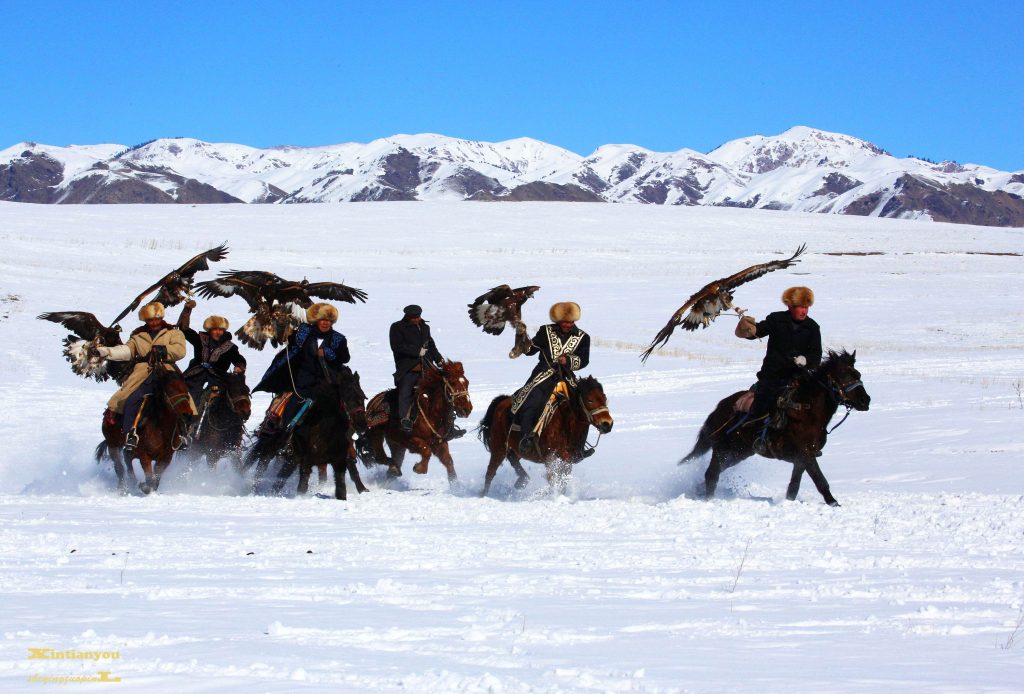
Kazakh ethnic group
The Sixty-two Kuoner records the Kazakhs’ memory of their ancestors and history Various pieces of music with different pentatonic scales and diatonic scales show the diverse sources of the kazakh ethnic group and the blending of musical cultures between the Kazakhs and their ancestors with the Mongolians the han, the turkic and other ethnic groups that spoke the Indo-European languages in the long river of history. the sixty-twoKuoner is not only the cream of the folk music of the Kazakh ethnic group the words sixty two and kuoner are sacred for the kazakhs kuoner is a kazakh word with multiple meanings, for instance, in terms of color, it means brown, a color that is made up of the seven colors contained in the sunlight, namely, red, orange, yellow, green, cyan, blue and purple Brown is the most beautiful color in the mind of the Kazakhs. a place that is suitablefor grazing and living with mountains, rivers, grass and trees, is called Kuoner tao a breeze n a blistering summer is called Kuoner jiele. a person who is kind, modest, careful and amicable is called Kuoner mijiazi. a joyous gathering is called Kuoner kanglekexie and a life that is moderately prosperous is called Kuoner kaleta. As shown, the word Kuoner is used to refer to beautiful things only. So, the most deep, beautiful period of spreading and test by generations of Kazakh ecome a classic after the long The kui(instrumental music), an(folk music), eyin(talking and singing), aites(aken allad playing while singing) and hesa-dastan (narrative poem singing) and other forms of performance which are popular among the Kazakhs are all derived from the Sixty-two loner In the mind of the Kazakhs, the human body has 62 blood vessels which are necessary for people to live. The Sixty-two Kuoner is an indispensible part of their life in that it can buoy up their spirit. Over the long period of production and life, the Kazakhs based on their own traditional culture, inherited and developed yueban music, Kanggu music and other kinds of music, and constantly absorbed the cream of the Central Plains culture that had been formed after the han Dynasty and the culture of the ethnic groups living around Mt Tianshan, and at the same time absorbed the expression forms of western music and finally created their own Sixty-two Kuoner the Kuoner of the Kazakh ethnic group gradually developed into a complete form of music with systematic cycles, a variety of rhythm and melody. It is said that apart from the Sixty-two Kuoner, there is Mole Kuoner(many Kuoners), Seqsan Kuoner(eighty Kuoners). Legend says that a wealthy family wouldhold entertainment activities lasting 30 days and celebrate for 40 days when something good happened to them the sixty-two Kuoner is the content of the entertainment, so if each Kuoner lasts two hours, then 3l days will be needed to finish the entire Sixty-two Kuoner if two are played per day.
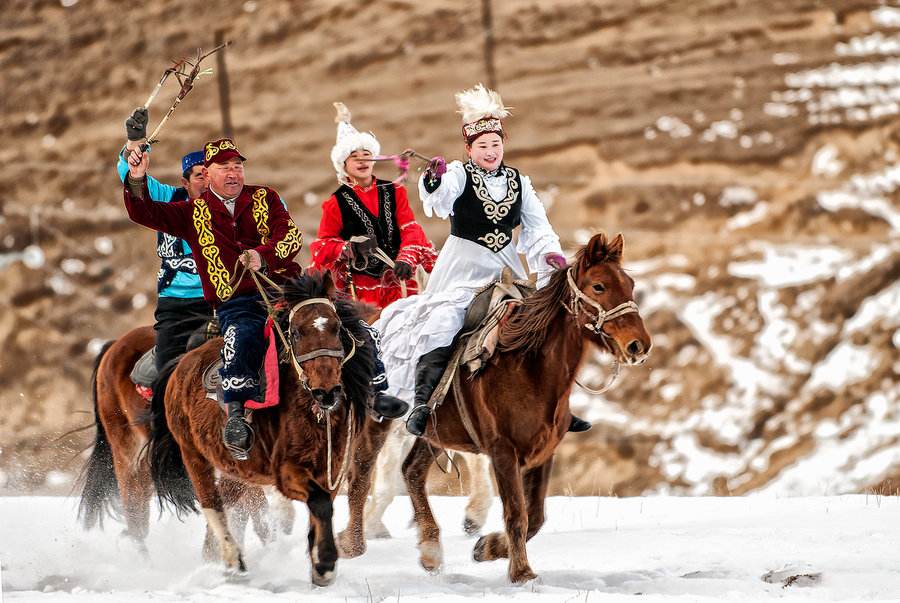
The influence of the musical dance of the central plains on the dance with musica accompaniment of the Kazakh ethnic group is shown in the similarity between the structure and expression form of the Sixty-two Kuoner with that of the daqu of the han, Tang and Song dynasties, based on the study on the aghu kuoner that has been collected and sorted out. Aghu, also known as White Swan Divertimento, reflects the wish and love stories of the.

Kazakhs. this has a deep historical foundation as a white swan has always been regarded b the Kazakhs as a symbol of fairness, pureness, firmness, beauty, solidarity and peace, which has resulted in the wide spread of music, legends and stories about white swan the sorted out Aghu Kuoner, composed of 22 pieces of music, includes three parts: an and kui(songs and tunes), suozisalasi(maxim and witticism singing) and salesayiran (jubilant singing and dancing). The entire divertimento describes how the swan looked for food, fell into danger, escaped and returned to its hometown, reflecting the positive attitude towards life and the mental outlook of the ancient ancestors of the kazakhs this divertimento is a combination of songs, dances and qu with kui of White Swan Cycle Divertimento as the keynote, accompanied by folk songs, hesa, aken ballad singing while playing and bi(dances). Besides dombura, other traditional instruments are also used, including Kubuz(four-stringed huqin aderna(vertical kung hou), barbute(five-stringed pipa), jetgen(seven-stringed Chinese harp), qiertier(three-stringed fiddle), serne(bagpipe), xaziserne(xun), sybyzgy(hujia), glenne(bili), dawlepeiz(camel-skin drum), dale(waist drum), atetuyeq(mati drum) and asatayeq(tambourine). Traditional national harmonics principles(parallel fifths and parallel octave) are adopted and the tune of dombura is set with five octaves which has stressed the flavor of each piece of music, giving full play the unique style of the national orchestralmusic of the Kazakh ethnic group. This divertimento features natural transition between the three parts, harmonious temperament, rigid structure and sprightly rhythm, forming a coherent whole.
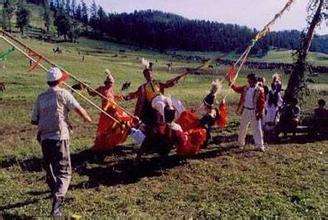
Song and tunes(nine sections), the first part of aghu kuoner can be regarded as the sanxu, except that it mainly contains tunes but is interspersed with songs and dances. Th second part, maxim and witticism singing (eight sections) equals to the zhongxu, singing with the accompaniment of dombura and antiphonal singing. The third part, jubilant singing and dancing(four sections) equals to po, which is the climax of the entire divertimento, with dances and songs. The entire divertimento(dabian) is composed of a lead melody and several variations(bian), each with a name. We’ ll leave aside whether thesorted out Aghu kuoner is original or not, but at least we could see the mutual influence between the Sixty-two Kuoner and the daqu of the han and tang dynasties The six great kinds of music represented by Qiuci Music, compared with Sixty-two Kuoner and muqam showed traces of direct inheritance. This striking similarity was clearly shown in Mahadur which had been obtained by Zhang Qian of the han Dynasty when hewas accredited to the Western Regions. Mahadur was a reference Li Yannian used in compiling Xianghe daqu. The musical form of daqu includes yan, qu and luan. Yan, which means the beginning of the song, equals to sanxu. Qu, which means presto, equals to Zhongxu and luan means the ending music, which means it’s time for po. The entire structure of daqu was obviously formed During the Sui and Tang dynasties, Qiuci music reached its pinnacle, presenting itself perfectly to the world a piece of ancient Qiuci Music Shanshanmani in the Book of Sui can be found in the Twelve Muqam of Xinjiang today. Shanshanmani was transliterated from Turkic language, which means”you, you made me”. Surprisingly, this song is included in the muqam in various places of Xinjiang. The first line of muqam is”Shanshanmanishan”which means you, ah, you made me. Isn’t it a miracle of history that a song of ancient times is still so pure without any change after such a long period? There is description about Shanshanmani in “Records of music”in the book of sui: the songs include shanshanmani qu includes pojiaer and dance music includes xiaotian and shuleyan”which explicitly mentioned song, jie, dance and yan The song belongs to the vocal music part, dance music belongs to the dance part and jie is a fast ending of the music. Yan is lyrical sweet music. So there were the three parts of qiuci music: acoustic music, instrumental music and dance music. These are actually the common features of the musical structure of the daqu of the Western Regions. After studying the yan, qu and luan stressed in the Xianghe daqu of the Han Dynasty, we now turn to the twelve Muqam of Xinjiang and will see clearly the composition of muqam: gong negme, dastan and mashrap Besides the literal meaning the end”, experts have in-depth arguments about the meaning of luan, which was interpretedas Yuelan in ancient dance music. Why did they use this word to represent dance music?
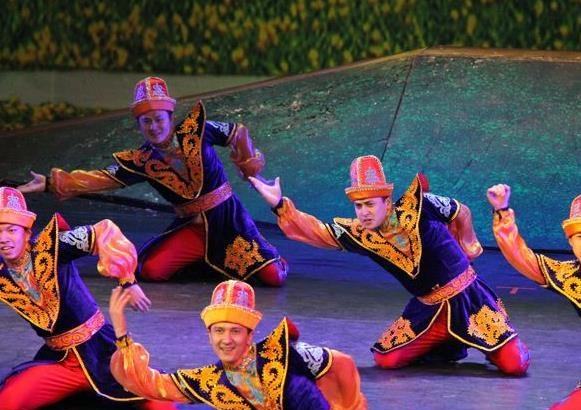
The reason is that Yuelan is a red flower that grows on the grassland of the Western Regions. Early in the Han and Tang dynasties, the ancient ethnic groups within the altaic language family who believed in shamanism would hold traditional sacrificial rituals at the end of each May when Yuelan were in bloom. Songs and dances as an important part of the rituals were performed with people standing in a circle, interspersed with”Hai, Hai, Yuelan This muqam cycle is still preserved in Komul Muqam up to now Wrestling on horses.
Sk he uygur Muqam shows some connections with the Sixty-two Kuoner The status of the y-two Kuoner in the national culture of the Kazakh ethnic group is on par with that of the Twelve Muqam in the national culture of the Uygur ethnic group. Sixty-two is actually an approximate number. According to current conditions of sorting out, over 200 cycles have been discovered in entire Xinjiang. The Sixty-two Kuoner is the fruit of a long period of cultural fusion between the central plains and the ethnic minorities in china ‘s border since the Han Dynasty. Scholars believe that the Sixty-two Kuoner with fixed tune mode and musical form has certain connections with the lost daqu of the han and Tang dynasties This connection has been proved by mugam to a certain extent.dancing and have brought up many poets and singers, created various instruments and and The hun as ancestors of the Uygurs were nomadic people who were good at singing pieces of music. Apart from sybyzgy(hujia), Kubuz and other traditional instruments they in the Book of Han, “Treaties on the five elements”in the book of the later han any egionsalso created jiao, jia, flute, pipa, huqin, etc. According to”Traditions in the Western RePreface of ode of pipa by Fu Yuan, during the han dynasty, jiao, jia, flute, pipa and hugin created by the Usun people and Hun people all spread to the Central Plains, and at the same time the qin, Zheng zhu, bell and drum also spread to Usun and Qiuci, which greatly enriched the performing techniques and promoted the development of culture of various states in the Western Regions and the Central Plains Research by the famous musician Mr Huang Xiangpeng showed that qupai including Auspicious Partridge(in the Golden Collection of Tunes of poems), World Music (name oftune in the wind and drum music), Shortened form of Lily mongolia Flowers(sanqu of the Yuan Dynasty), Spring Breeze(Xi’ an drum music) were originally called Spring Breeze. In Records of the Administration of Court Performances, Spring Breeze ranks after Qiuci music and Zui Hun Tuo. So Spring Breeze also belongs to Qiuci Music. After translating the fourqupai with different origins, he found that gongdiao(the modes of ancient Chinese music), structure and the seven lu(ancient Chinese standards of setting the pitch for singing or tuning) are completely the same. He recorded the translated Auspicious Partridge andexperts on the twelve Mugam from Xinjiang to listen Experts said, “this is the music of our Kuga. Kuga was named Qiuci in ancient time. So, the historical connections between these qupai were proved.
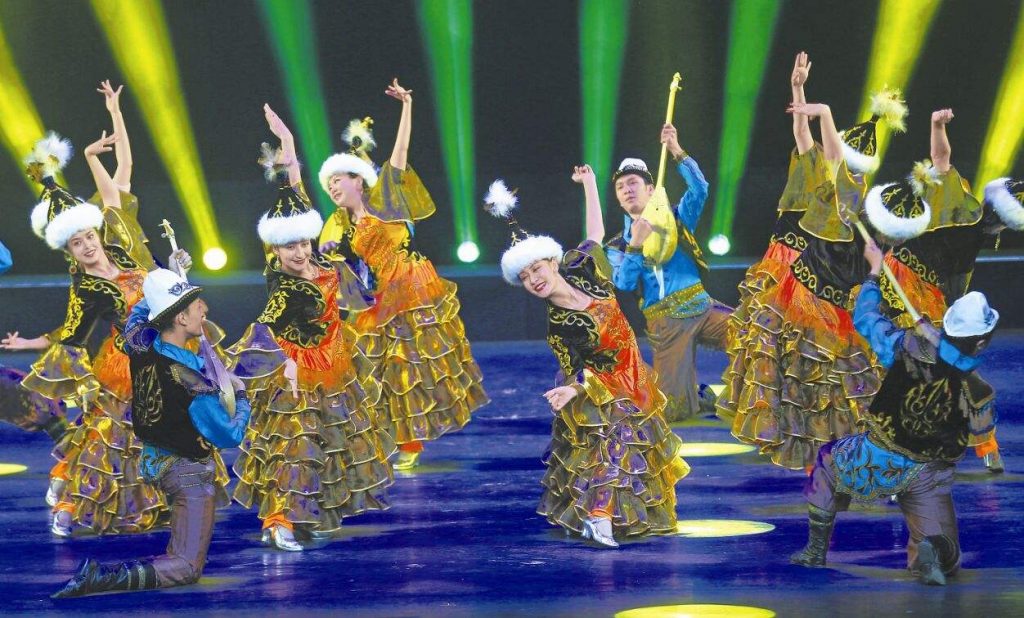
From this we could see that the extent of cultural fusion between the central plains and the ancient Western Regions since the Han and Tang dynasties was unparallel compared with that in any other periods. the living fossils including the Sixty-two Kuoner of the Kazakh ethnic group and the mugam of the Uygur ethnic group were preserved in China’ sborder, Xinjiang, which features multiple ethnic groups, multiple regions and diverse cultures. These vivid and living cultural symbols revealed a truth: The pattern of plurality and diversity of the culture of the Chinese nation and the harmonious relationships between different ethnic groups of China will only be realized when we assimilate and are tolerant towards different cultures.








